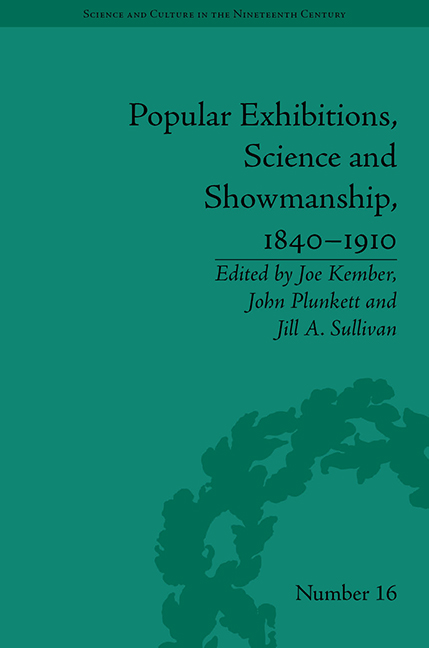Book contents
- Frontmatter
- CONTENTS
- Acknowledgements
- List of Contributors
- List of Figures and Tables
- Introduction
- Part I Science and Spectacle
- Part II Word and Image
- Part III Staging Knowledge
- 7 The Talking Fish: Performance and Delusion in the Victorian Exhibition
- 8 Representation, Race and the Zoological Real in the Great Gorilla Controversy of 1861
- 9 On Wonder: Situating the Spectacle in Spiritualism and Performance Magic
- Part IV The Politics of Display
- Notes
- Index
9 - On Wonder: Situating the Spectacle in Spiritualism and Performance Magic
from Part III - Staging Knowledge
- Frontmatter
- CONTENTS
- Acknowledgements
- List of Contributors
- List of Figures and Tables
- Introduction
- Part I Science and Spectacle
- Part II Word and Image
- Part III Staging Knowledge
- 7 The Talking Fish: Performance and Delusion in the Victorian Exhibition
- 8 Representation, Race and the Zoological Real in the Great Gorilla Controversy of 1861
- 9 On Wonder: Situating the Spectacle in Spiritualism and Performance Magic
- Part IV The Politics of Display
- Notes
- Index
Summary
Early in the summer of 1873 at the Egyptian Hall in London's Piccadilly, the magician John Maskelyne (with his assistant George Cooke) was performing one of the most successful parts of his magical act: the spiritualist séance. Maskelyne's hands were tied securely, he was placed inside a cabinet on a chair and the door was closed, leaving only a small window high up, that allowed access from inside to out. Very quickly noises began inside the cabinet; a tambourine was played and then thrown out through the window onto the stage. Cooke rushed to open the doors of the cabinet, revealing Maskelyne still securely tied and sat on his chair. Was this the dead returned as spirits? Although not offering any explanation to the audience for the extraordinary phenomena produced, the character of Maskelyne and Cooke's performance clearly indicated that what had been seen was trickery (see Figure 9.1). This was the skill of the magician not the return of the dead. The aim – besides drawing in a large audience and its revenue – was to explode the claims of spiritualists, whom Maskelyne (like many other magicians) believed to be defrauding the public with their claims of spirit communication.
Meanwhile, at the Cavendish Rooms in London in June 1873 George Sexton, editor of the spiritualist periodical the New Era, gave a lecture on spirit-mediums and conjurers. His aim was to ‘deal severely’ with magicians who ‘burlesque and ridicule the whole subject of spirit-communion’ by employing their magical expertise to reproduce the phenomena found at spiritualist séances.
- Type
- Chapter
- Information
- Popular Exhibitions, Science and Showmanship, 1840–1910 , pp. 167 - 182Publisher: Pickering & ChattoFirst published in: 2014



